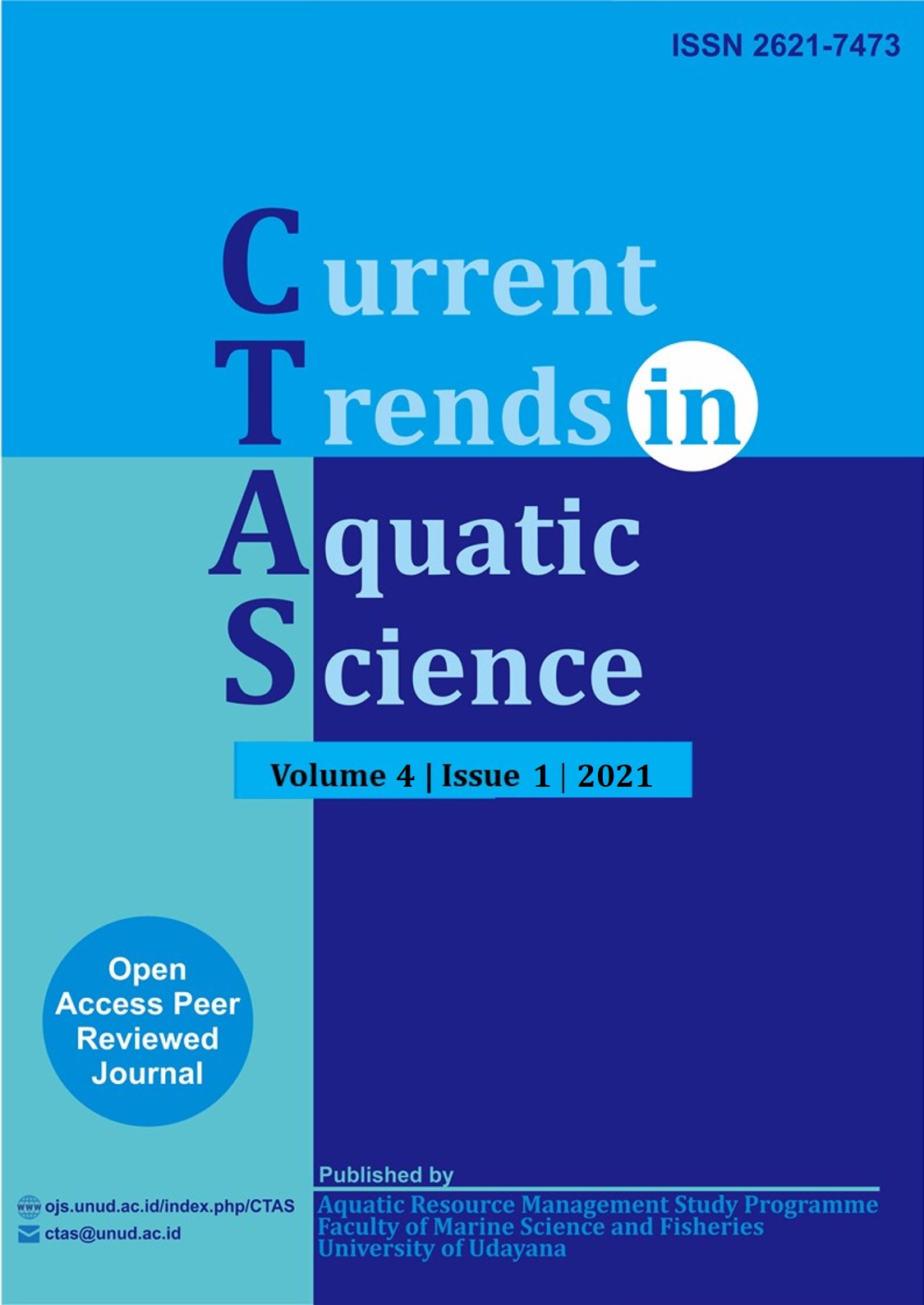Bioindikator Makrozoobenthos dalam Penentuan Kualitas Perairan di Tukad Mati Badung, Bali
Abstract
Abstract
Tukad Mati (Mati River), is a river located in Badung regency. The amount of garbage that enters the river causes sedimentation in the estuary. The water in Tukad Mati becomes dirty and smells bad. There fore water . The degradation of water quality the living organisms. A number of organisms can be functioning as bio-indicators of water quality, such as macrozoobenthos. This study aims to determine Tukad Mati's status based on equitability index, diversity index, and dominance index of macrozoobenthos, and to determine water quality using biological indicators of macrozoobenthos with the Family Biotic Index (FBI). The study was conducted in November 2019. Samples were collected from 3 stations and samples collections ware repeated 4 times during the study. The highest abundance of macrozoobenthos at station I was Notopala sublineata species 6 ind/m2. station II was Semisulcospira libertina 5.16 ind/m2. And station III was Lmynaea acuminata species at 5.56 ind/m2. The diversity index of station I was 2.68, station II was 2.49, and station III was 2.59. Dominance index at the three stations was 2. Similarity index of station I was 0.99, station II was 0.92, and station III was 0.95. The FBI value of station I was 6.32; station II was 6.22; station II was 6.23. Disolved oxygen (DO) ranges from 6.67 to 7.72 mg/L; BOD5 ranges from 9.21 -10.28 mg/L; pH ranges from 5.6 - 5.8; The temperature during the stuy was on average of 30.1°C; the turbidity was ranged form 8.16 - 9.84 NTU. The he substrate of station I was rocky, sandy and muddy; station II was sandy; and station III was muddy sandy.
Keywords: Abundance; Biomonitoring, Makrozoobenthos; Water quality, Mati river


